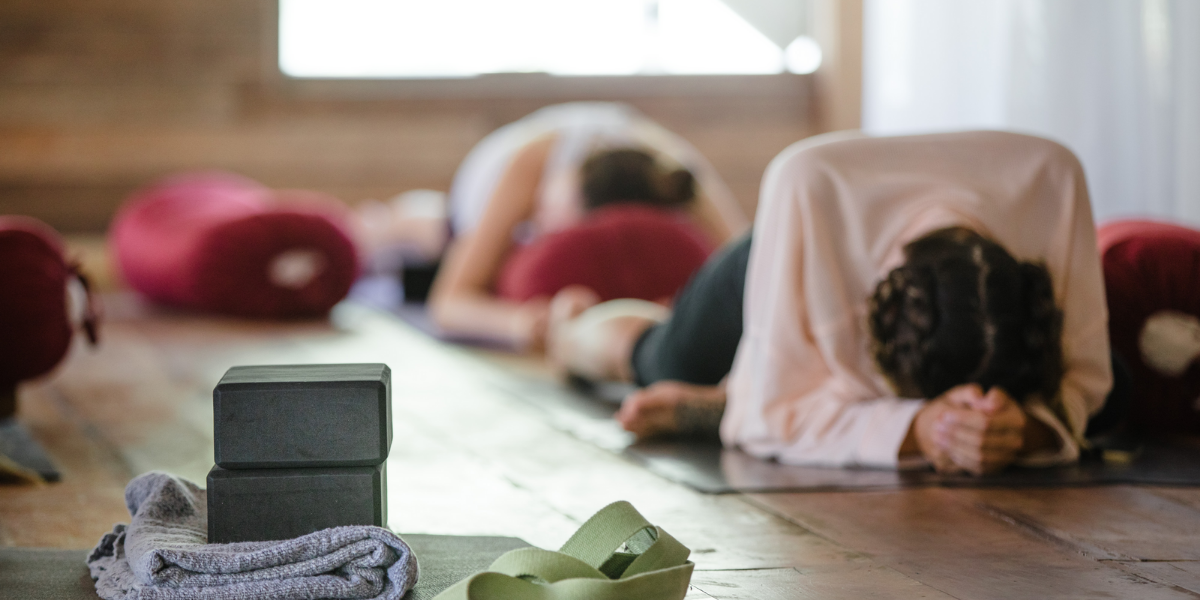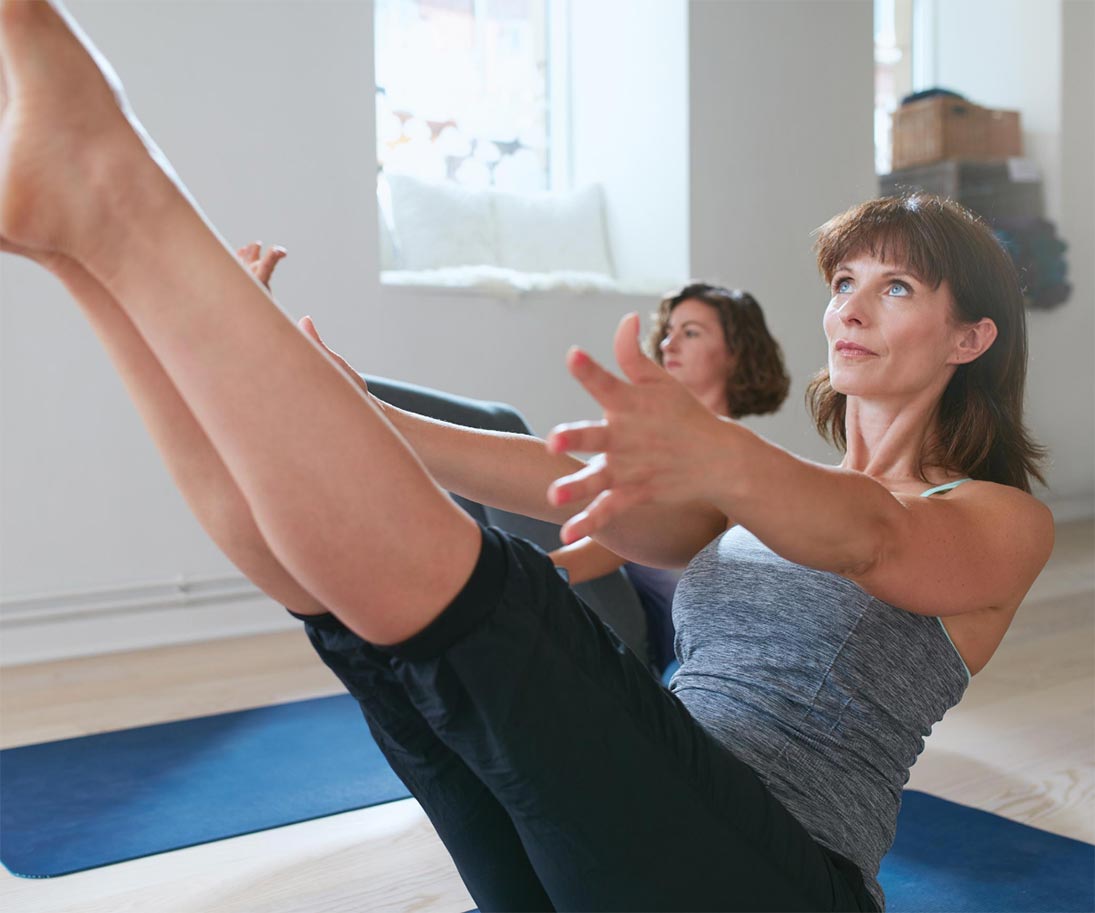
It is popular knowledge that yoga can help relieve pain and general stress. With a combination of current events and uncertainty for the future, we are, as a whole, enduring heightened levels of anxiety and stress. The American Psychological Association found that most Americans are reporting a significant increase in stress due to the Coronavirus pandemic. For American parents, this increase is even more heightened with additional worries including education, milestones, and healthcare.
Restorative yoga may be used as a tool to relieve stress, relaxing both the body and mind through passive stretching. “Restorative Yoga is the practice of being rather than doing. We are not looking for something, consuming, providing, proving, earning, showing,” says Gwendoline Ferreira, the owner of Yoga Bliss Lembongan and restorative yoga teacher.
Read on to find out more about restorative yoga and 7 restorative yoga poses we recommend for relieving stress.
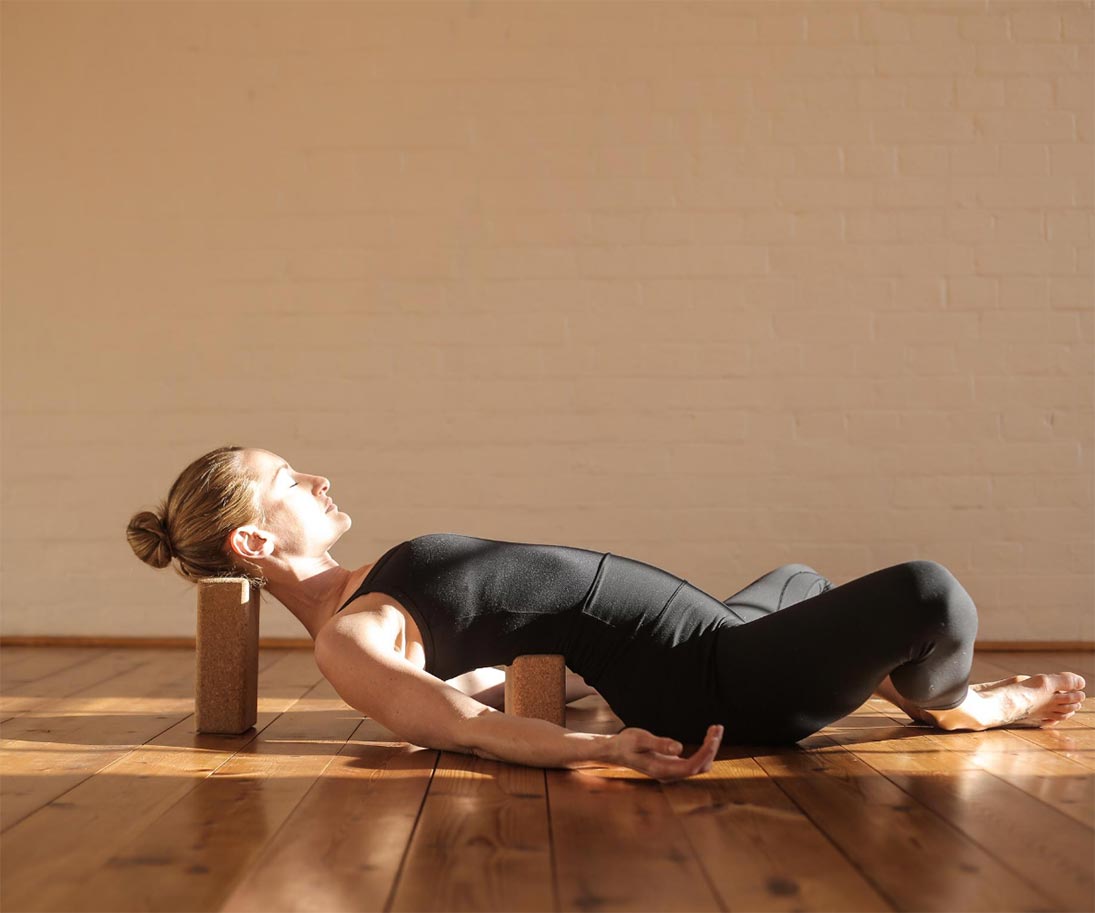
What is Restorative Yoga?
Deriving from the word “restore,” you can easily guess that this type of yoga will be quite passive.
Restorative yoga was created by B.K.S. Iyengar and involves passively stretching and opening your body. Typically, a yoga class will have you moving slowly from one pose to another and holding poses for a long time, all while increasing flexibility and building strength. You will be required to maintain a comfortable posture and just breathe, which can be equally as difficult as more advanced, fitness-focused classes. In most cases, you will need props like blocks, straps, and blankets to support your poses. All of these props should be provided for you throughout a restorative yoga class.
You can practice restorative yoga for hip openers if you often feel tightness in that area. Restorative yoga sequences can also be included in your sessions if you want to mix things up.
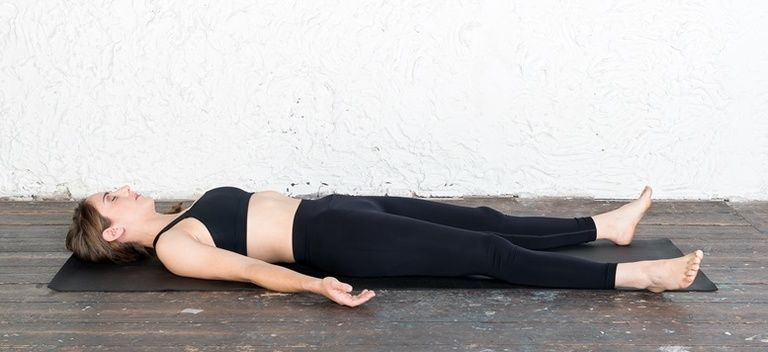
Benefits of Restorative Yoga
As expected, the long, slow holds associated with restorative yoga come with many benefits, including:
– Reduces Stress – Long holds that require you to breathe in and out, and focus on breath have similar effects to meditation.
– Lowers Aches & Pains – Most of our active hours are spent standing or sitting. In these positions, gravity pools blood and toxins in our bodies. Restorative yoga poses like Legs Up the Wall can reverse this, lowering blood pressure, improving brain activity, and normalizing hormone levels.
– Strengthens the Spine – Many poses used in restorative yoga involve deeply twisting, bending, and stretching the spine, which releases toxins and strengthens the spine.
Practice restorative yoga for yourself with the following 7 restorative yoga poses.
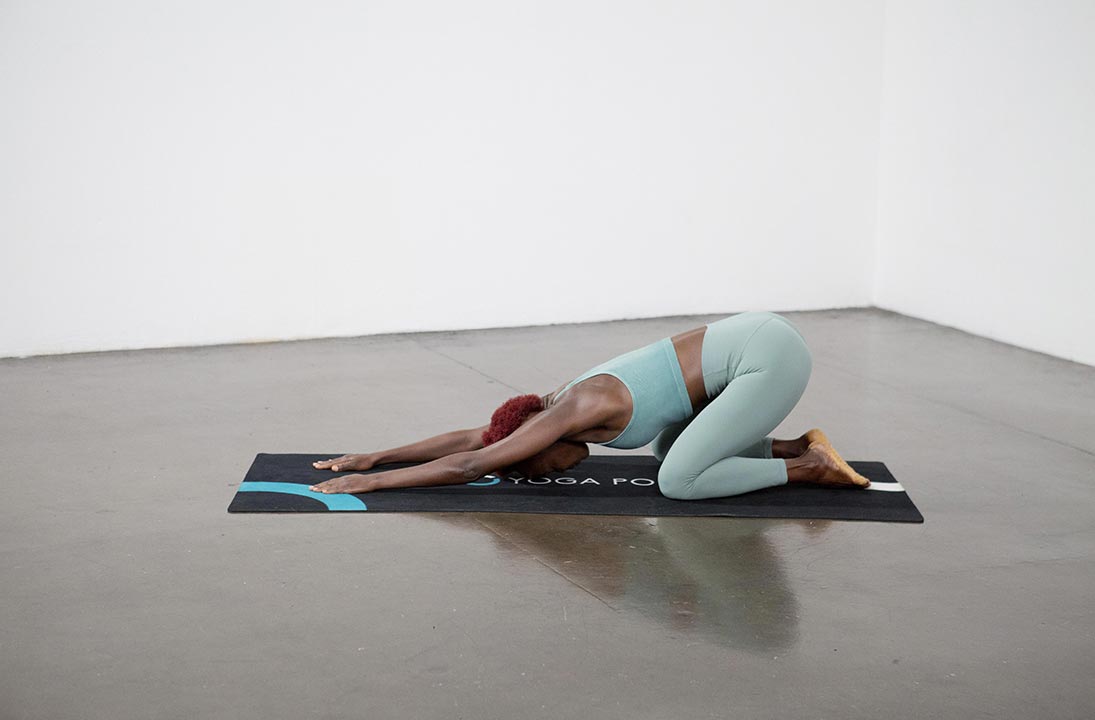
1. Child’s Pose (Balasana)
This yoga pose is great for lower back pain and it can be quite relaxing too. Child’s Pose stretches the spine and promotes healthy alignment and posture.
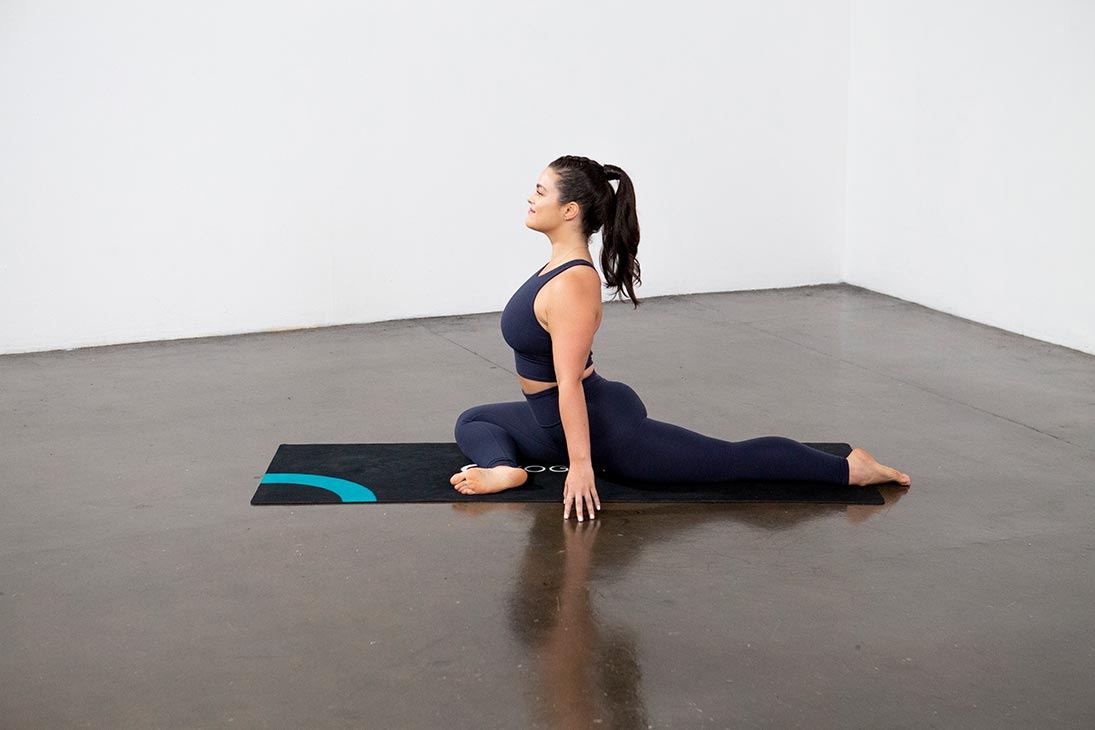
2. Half Pigeon Pose (Ardha Kapotasana)
This is a restorative yoga pose that can involve props. Half Pigeon Pose offers a beautiful stretch throughout the hips, which is coincidentally where we store a lot of stress.
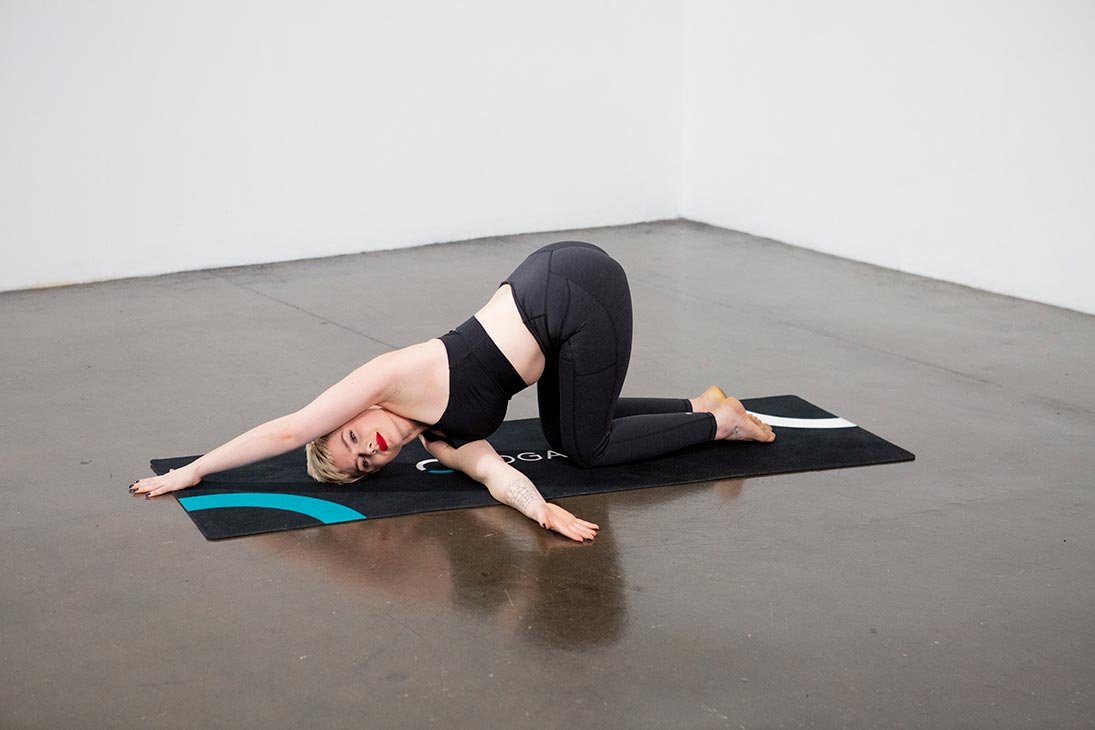
3. Thread the Needle Pose (Parsva Balasana)
This restorative yoga pose will stretch your back and shoulders, all while twisting your spine. Enjoy the stretch throughout your upper body and back, and remember to breathe!
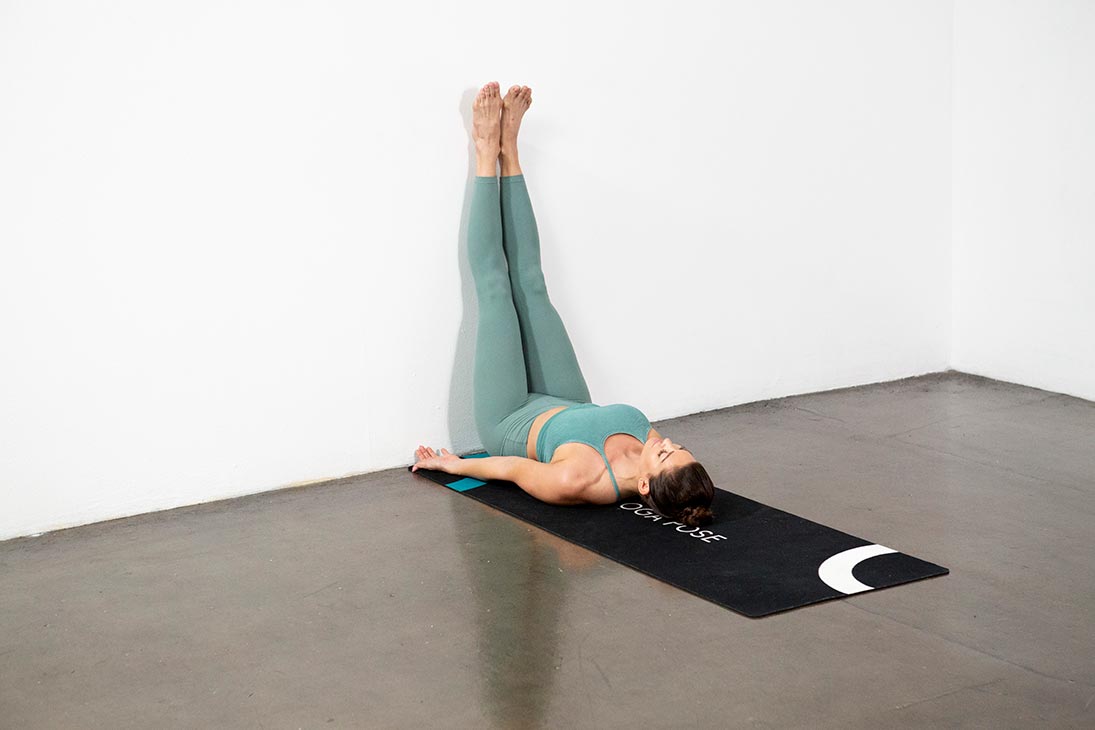
4. Legs Up The Wall Pose (Viparita Karani)
From the name you can tell how this restorative yoga pose will be performed. This pose regulates your blood pressure and brain activity.
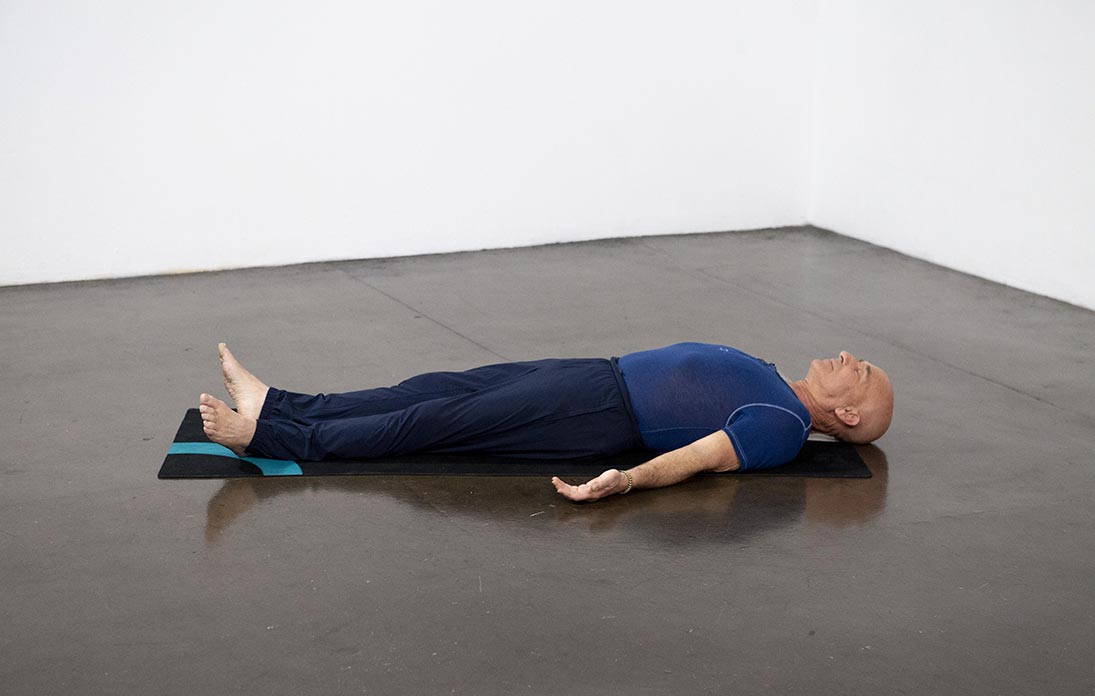
5. Corpse Pose (Savasana)
Corpse Pose or Savasana is a common yoga pose that is often mistaken for being easy. You should never skip Savasana at the end of yoga class as it culminates all of your work. The hardest part of this pose is just relaxing, letting your mind clear and your body truly rest and restore.
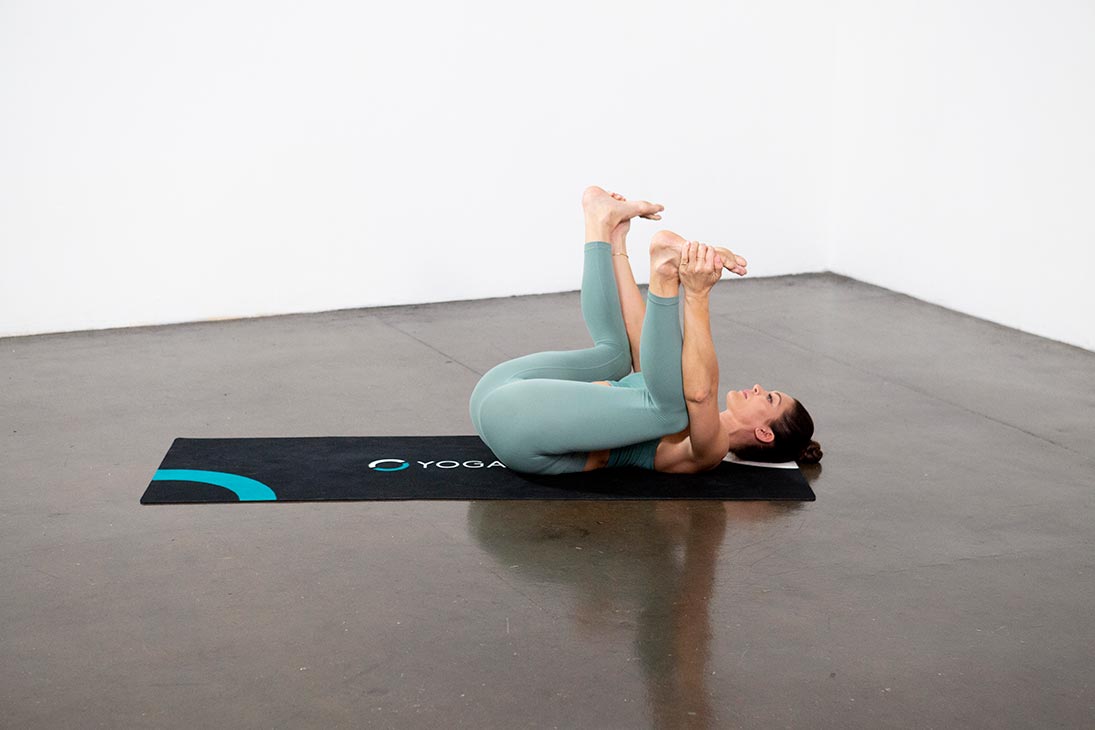
6. Happy Baby Pose (Ananda Balasana)
Happy Baby Pose is an excellent addition to any yoga sequence that releases tight hips. Try rocking back and forth, and side to side, while holding this pose – you will enjoy the gentle massage to the back.

7. Reclining Hero Pose (Supta Virasana)
How to Begin Your Restorative Yoga Journey
When you’re ready to harness the power of restorative yoga and take your practice to the next level, consider a yoga teacher training (YTT) that will allow you to expand your knowledge and understanding of the practice. One way to do this is with a 20-hour Restorative Yoga Teacher Training. Yoga Bliss Lembongan is hosting a virtual YTT for deeper learning right now! You can sign up here.
